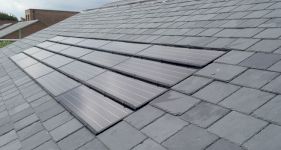Hip to Gable Loft Conversion Cost
- The average hip to gable loft conversion costs around £45,000 in 2025.
- It typically takes around 6 to 8 weeks to complete this type of loft conversion.
- NEW! Our hip to gable loft conversion cost calculator.
- A complete pricing breakdown which includes types to consider, along with what such a task usually involves.
- How long the job should approximately take and a general overview of what kind of jobs can be performed.
- How to find and hire a loft conversion specialist.
Want to discover all the details of hip to gable loft conversion costs?
A hip to gable loft conversion is becoming a prevalent home feature for semi-detached and detached properties that have a hipped roof. This means that they have a roof that has a sloping side as well as the slopes at the front and back.
So, how much will it cost you?
The average cost for a standard hip to gable loft conversion in the UK is £45,000, although for detached properties or projects with higher specifications can reach £55,000 to £75,000 (or over, depending on size and complexities involved).
This guide will help you calculate how much a hip to gable conversion will cost you, although end prices may vary depending on size, design and materials. Labour fees are also a deciding factor, with tradesmen costs higher in areas such as London and the South East.
Ready to get a quote?
MyJobQuote has a Trustpilot score of 4.8 (30,000+ reviews) and is used by more than 1 million homeowners across the UK every year.
Tell us what you need and we'll connect you with loft conversion specialists near you. They'll provide you with free and no obligation quotes for this type of job.
Need more time and information?
Check out the guide below for everything you need to know about getting a hip to gable conversion in the UK.
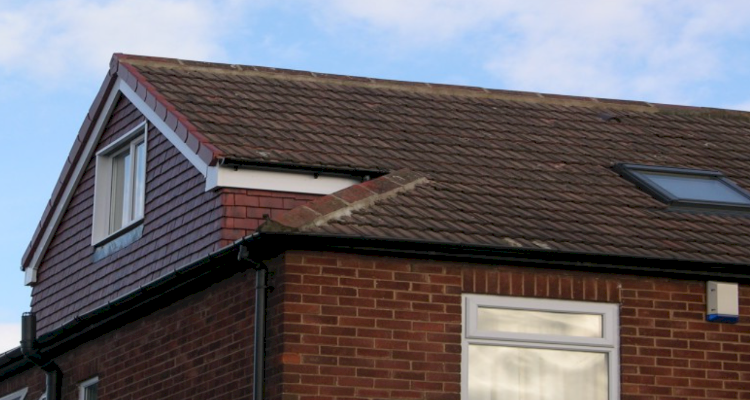
£45,000
Table of Contents
- How Much Does a Hip To Gable Loft Conversion Cost?
- Supply Costs Only
- Additional Hip to Gable Loft Conversion Costs
- Labour Costs and Timescales
- What Impacts Hip to Gable Loft Conversion Costs?
- What's Involved in a Hip to Gable Loft Conversion?
- Can I Build a Hip to Gable Loft Conversion Myself?
- Building Regulations & Planning Permission for a Hip to Gable Loft Conversion
- Types of Hip to Gable Loft Conversions
- Hip to Gable Loft Conversion Ideas
- Benefits of a Hip to Gable Loft Conversion
- Hiring Loft Conversion Specialists Near You ? Checklist
- FAQs
- Sources
How Much Does a Hip To Gable Loft Conversion Cost?
Adding a hip to gable loft conversion is a great way to add more living space to your home.
It can be used as an extra bedroom, spare room, or an office. By adding a hip to gable loft conversion, you can even have a potential ensuite bathroom if you so desire. Before deciding what's the best use of the space, you may need some advice from an expert before starting the job. It's recommended to ask for at least 3 separate quotes in order to assess what's possible.
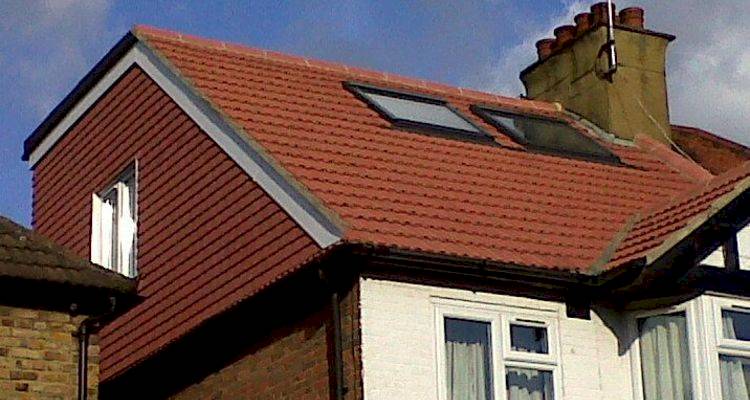
This type of conversion works by changing the sloping side so that they convert into vertical walls instead of remaining sloping as they did before. This then turns it into a gable roof instead of a hipped roof, and it creates extra living space.
The average cost for this type of loft conversion is around £40,000 to £65,000. It's a large project that requires a lot of planning and involvement from different types of tradespeople. On average, you should expect a hip to gable loft conversion to take between 6 and 8 weeks to complete, although this may take longer for larger and more complex builds - poor weather conditions can also impact the time required.
Does 7 weeks sound about right for the timescale to do a hip to gable loft conversion?
Hip To Gable Loft Conversion Prices
Below are the estimated costs for hiring a tradesperson to fit mid-range (£25/m²) floor tiles in different-sized rooms.
| Size of Conversion | Average Cost | Time frame |
|---|---|---|
| Hip to gable loft conversion on average-sized semi-detached property | £35,000 – £50,000 | 5 – 6 weeks |
| Hip to gable loft conversion on large-sized semi-detached property | £50,000 – £65,000 | 6 – 8 weeks |
| Hip to gable loft conversion on average-sized detached property | £40,000 – £55,000 | 6 – 8 weeks |
| Hip to gable loft conversion on large-sized detached property | £60,000 – £75,000 | 7 – 9 weeks |
Loft conversion costs are typically lower for Velux and dormer loft conversions than a hip to gable loft conversion. This is mainly because these other types of loft conversions require fewer structural changes to be made to the roof.
To put it in perspective, the cost for a dormer loft conversion is around £1,500 to £2,000 per m², while the cost of a Velux loft conversion is typically between £1,000 to £1,500 per m².
For a mansard loft conversion costs are around £1,750 to £3,000 per m², which is just a bit more than you should expect to be quoted for hip to gable loft conversion costs per square metre.
How much does it cost to convert a loft space that's approximately 45m² into a bedroom?
Hip to Gable Loft Conversion Cost Calculator
Supply Costs Only
Below is a list of the separate costs that you may need to pay for your loft conversion:
| Supply | Average Cost |
|---|---|
| Joinery | £3,500 – £4,000 |
| Staircase | £1,800 – £2,200 |
| Windows | £200 – £400 per window |
| Insulation | £5 – £25 per m² |
| Structural beams, joists, and masonry | £1,500 – £4,000 |
| Electrics | £700 – £1,000 |
| Roof structural changes and coverings | £4,200 – £4,800 |
| Plastering | £2,300 – £2,500 |
| Flooring | £5 – £50 per m² |
| Decoration | £1,000 – £1,500 |
| Scaffolding | £2,800 – £3,500 |
Additional Hip to Gable Loft Conversion Costs
There are a number of additional costs that may come up during a hip to gable loft conversion. Below is a list of those extra costs that may come up:
- Installing light fittings - £80 to £150
- Replace a radiator - £180 to £240
- Replacing roof tiles - £180 to £200
- Architect costs - £500 to £1,200
- Rendering a house - £3,500 to £4,500
- Roof repair - £350 to £500
- Underfloor heating - £1,000 to £1,500
- Wet room cost - £7,500 to £8,500
Labour Costs and Timescales
When it comes to a hip and gable loft conversion, there are several different types of tradespeople that need to be involved in the job. There will usually be around 2 to 3 people working on the project at any one time.
On average, the total amount you can expect to pay for labour for a hip to gable loft conversion is between £20,000 and £35,000 (although tradesmen rates are higher in London and the South East, which may impact your end cost within these areas).
Below is a list of the costs that you can expect to pay for the different elements of labour for this type of project:
| Tradesperson | Average Cost Per Day |
|---|---|
| Builder | £150 – £250 |
| Carpenter | £130 – £200 |
| Decorator | £120 – £200 |
| Electrician | £150 – £250 |
| Plasterer | £150 – £250 |
| Plumber | £150 – £270 |
| Tiler | £140 – £250 |
Which takes longer, a hip to gable loft conversion or a dormer loft conversion?
What Impacts Hip to Gable Loft Conversion Costs?
There are several factors that may affect the overall cost of the job. Below is a list of the main things that may affect the overall expense:
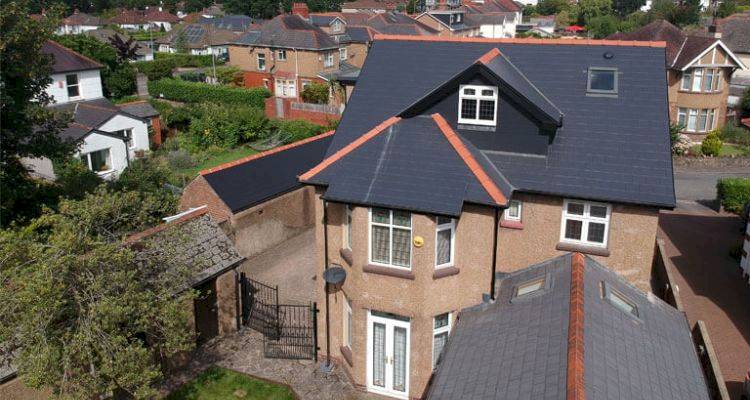
Size of Conversion
The size of the conversion can affect the overall cost of the job. A larger loft conversion will cost more, as it will need more materials. It will also take much longer to complete and so will end up costing more in labour.
Window Choices
The more windows you want in your new loft room, the more you can expect to pay. Dormer windows tend to cost more than Velux style windows. Dormer windows will cost around £4,000 to £6,000 each, whereas Velux windows will cost between £800 and £1,100 each.
Plumbing Costs
The more plumbing that needs to be added to the loft, the more you will end up paying in plumbing costs. The cost of plumbing includes material costs and plumbing labour costs. Usually, a plumber will charge around £35 to £45 per hour.
Internal Walls
If you would like to split your new loft area into more than one room, you will have to pay additional costs for internal walls. Adding an internal stud wall with plastering will cost around £700 to £1,000 depending on the size.
Electricity Costs
The more electrical sockets and lights that need to be installed in your new loft area, the more you will end up paying. An electrician will usually charge an hourly rate, so you can easily save on costs by choosing electrical items that are easy to install. The average price per hour for an electrician is around £50 to £120.
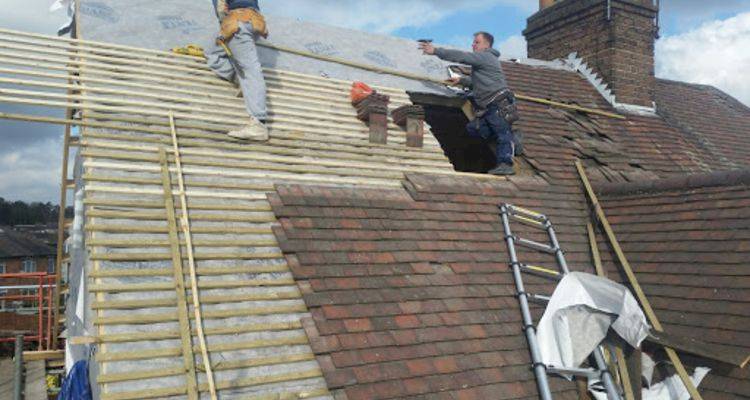
What's Involved in a Hip to Gable Loft Conversion?
A hip to gable loft conversion is a very large job that requires a lot of work. If you are able to choose a contractor who is able to provide all of the relevant tradesmen in an organised fashion with no delays, it can be completed in logical stages.
Below outlines a rough guide, although this is under the assumption weather doesn't cause any issues and the exact timeframe can vary depending on the extent of the build required.
- Week 1: Scaffolding and Initial Preparation - The job will begin with erecting scaffolding. All of the materials needed for the job will be gathered on-site, and then the roof will be opened up so that all areas can be accessed.
- Week 2: Structural Alterations - During this week, your roof structure will be altered, and walls will be added. Extra supports will be installed as needed, and if you are having windows installed, these will also be installed during this stage.
- Week 3: Completing External Work - The remaining construction on the roof will be finished off and any tiles that need to be added or replaced will be actioned. Insulation will also be added to the roof. On the internal side, the loft space will now be ready for any electrical or plumbing work that needs to be done.
- Week 4: Internal Loft Space - If there are any windows that haven't yet been fitted, these will be added now. The floor will then be ventilated as needed, and the plasterboard will also be fitted. If there are any internal walls going into the new loft space, these will also be added.
- Week 5: Interior Fittings - This is the point when the stairs will be added. If you are fitting a bathroom up there, this will also go in during this stage. All electrical fittings will also be finished at this time. Towards the end of the week, doors can be hung, skirting added, and the plaster skimmed.
- Week 6: Finishing Touches - During this week, all of the remaining unfinished jobs will be completed. If your contractor is going to be decorating, this will also be completed during this stage. The contractors will then remove all of the scaffolding and dispose of any waste.
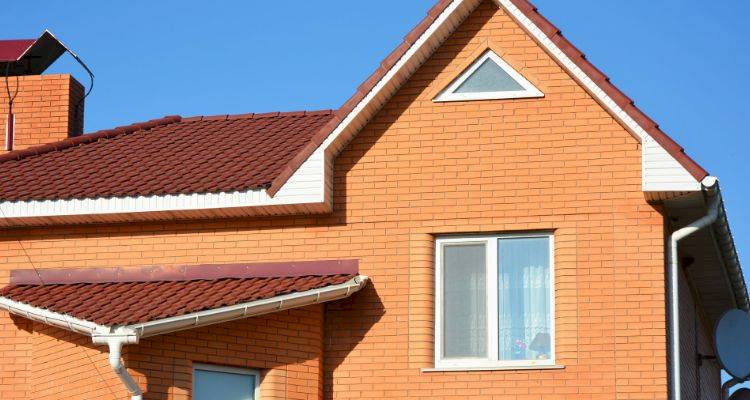
Can I Build a Hip to Gable Loft Conversion Myself?
Since a hip to gable loft conversion requires structural changes to the property, it is best to leave it up to the professionals. If you are having electrics, plumbing, and a staircase fitted, these are also all specialist projects that require an expert.
Even if you have a strong background with similar projects as a qualified builder, it's still not recommended that you take on the entire job yourself. Aside from the build itself, there are many tasks needed to be completed even before you can start thinking about the final fixtures and fittings.
Some of the jobs that you may be able to take on yourself include clearing the loft space, disposing of waste, decorating, laying flooring, plastering, and adding insulation. Doing some of these parts of the job yourself may save you a little bit of money and reduce the overall cost of the job.
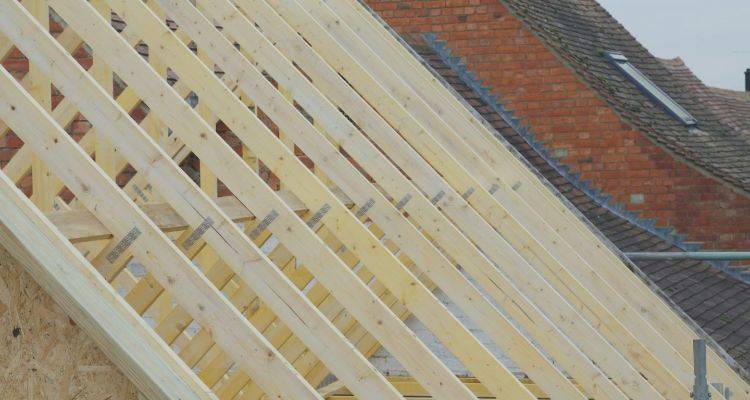
Building Regulations & Planning Permission for a Hip to Gable Loft Conversion
In most cases, you won't need to request planning permission to complete a loft conversion as it will come under your Permitted Development rights, unless the project signifcantly changes the appearance of your property or extends beyond your existing roof.
Other scenarios where you may need to still apply include if you live in a listed building, conservation area, or within an Area of Outstanding Natural Beauty (AONB). If you are unsure whether or not your project is excempt from requiring planning permission, then it is always best to check with your local planning department or the official Planning Portal before going ahead.
The cost to apply for planning permission is generally around £200 in the UK, although more complex applications may be slightly higher. The decision process usually takes between 8 and 13 weeks.
You may also be required to issue a Party Wall Notice before beginning work, and in the event a formal agreement needs to be made with a neighbour, then surveyor fees can range from £150 to £200 per hour, with the total cost often reaching around £1,000.
As for Building Regulations, these are in place to ensure that the work is safe, structurally sound, energy efficient, and fire compliant. You can have the work inspected throughout the build, with the help of your local Building Control Department or a private approved inspector.
Finally, a completion certificate is issued once the work has come to an end and passes the legal requirements. The cost for building control inspections typically range anywhere from £350 to £1,250, depending on the scale of the loft conversion.
If I'm converting a loft for use as a home office rather than a bedroom, will I still need to meet certain building regulations?
Types of Hip to Gable Loft Conversions
There are two types of hip to gable loft conversion – a single hip to gable loft conversion and a double hip to gable loft conversion.
A single hip to gable loft conversion involves turning the end side of the roof into a straight wall. This type of conversion is most common on end of terraced houses as well as semi-detached houses.
Some detached houses will have a hipped roof on both sides of the home. In these cases, a double hip to gable loft conversion is the best option as this allows you to create more space in the new room.
Hip to Gable Loft Conversion Ideas
When it comes to a hip to gable loft conversion, you can use it for so many different things. Basically, if you can think it, you can probably do it.
The best course of action when it comes to deciding what to do with your new loft room is to take a look at the shape and size of the room and see what would best fit in that space. Below is a list of some of the most common rooms that a loft conversion can be used for:
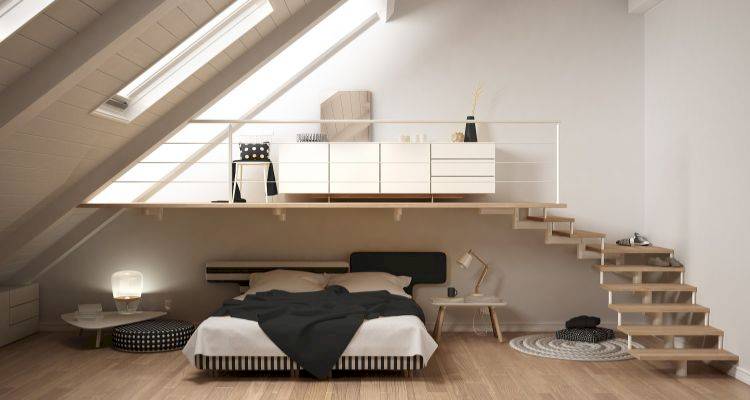
Master Bedroom with Ensuite
A loft can create an excellent space for a master bedroom. It's perfect as it is an entirely reclusive place away from the rest of the house. Lofts usually have a large amount of space, which can create a large bedroom as well as an en suite.
Child's Bedroom
If your loft space is relatively narrow, it would make a great children's room as a child tends to require a smaller bed and less space. Many children also like the idea of having their own space right at the top of the house.
Office
You can make great use of your loft space by turning it into an office tucked away from the rest of the house. Your own space at the top of the house is an excellent option, as you'll be less likely to be disrupted up there. This also allows you to create a separate work and living space in your home.
Playroom
If you have children, a loft conversion makes a great space for a playroom. A whole room dedicated to toys and games is a real blessing as your family grows. Your children will also love having their own space that is uniquely theirs.
Guest Bedroom
The new loft conversion is a great space for a guest bedroom. It's an easy space to close up if it's not used every day, and it also gives guests their own private space away from the rest of the house when they come to stay.
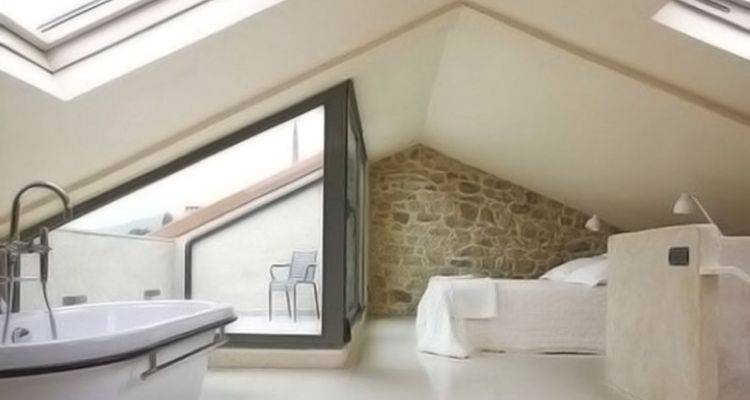
Home Cinema
A loft conversion has cosy dimensions that can make it perfect for a home cinema space. Having a space upstairs dedicated to watching movies can make it an extra special experience.
Benefits of a Hip to Gable Loft Conversion
There are many great benefits to completing a hip to gable loft conversion on your home. Below is a list of some of the main advantages of completing this type of conversion:
Avoid Having to Move Home
If your family is growing and you're outgrowing your current home, then you may be thinking about moving. However, you can create extra space in your current home by converting your loft into a new room. That way, you don't need to worry about the stress of moving.
Add Value to Your Home
The money that you use to complete your loft conversion can be reflected in the overall value of your home when you come to sell it. With this in mind, a loft conversion makes a significant investment.
What type of loft conversion adds the most value to a property?
Add Natural Light to the Home
When you convert your loft into a room, you can add windows to the room and also above the new staircase. This allows you to add a lot of extra natural light into your living space, which can improve the overall aesthetic of your home.
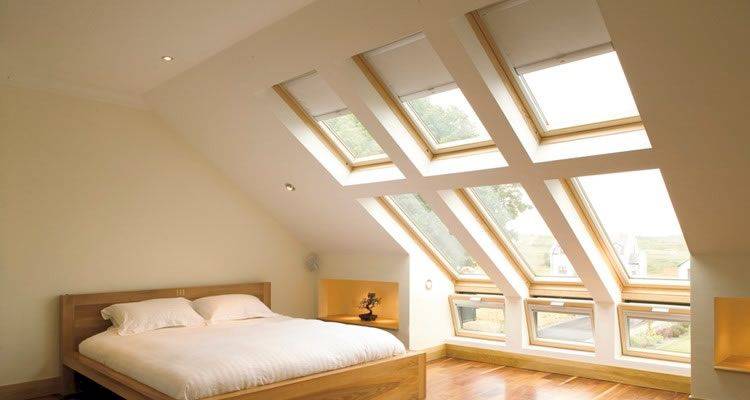
Increase Indoor Space Without Increase Outdoor Space
When you choose to extend your home, you may be reluctant to do so if it means compromising on your garden space. If you choose to have your loft converted instead, you can add all of the extra space you need without having to cut into any of the exterior areas of your home.
Energy Efficient
When you convert your loft, you will have to put in new insulation. This is a requirement under the building regulations. Adding this insulation means that you'll most likely make your home more energy-efficient. You may even notice a decrease in your energy bills.
Hiring Loft Conversion Specialists Near You — Checklist
There are a few things you will need to consider before hiring someone to do your hip to gable loft conversion for you. Below is a list of some of the main things that you should consider when looking for the right engineer for the job:
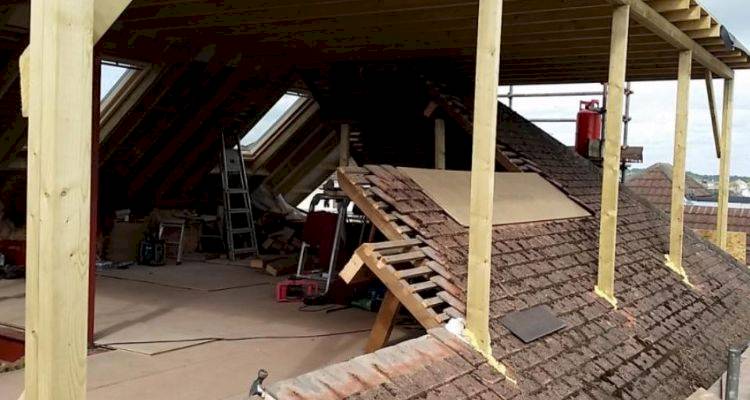
- Does the contractor offer any guarantees with their work?
- How much is the work to complete? – Ask for a breakdown of costs so you can ensure you are paying a fair price for each element of the job.
- Is the contractor experienced in hip to gable loft conversions?
- How many years' worth of experience does the contractor have in hip to gable loft conversions?
- Will the contractor fix any issues that may arise?
- Does the contractor have all the appropriate equipment needed to carry out a hip to gable loft conversion?
- Will the contractor follow building regulations and arrange relevant inspections and visits as needed?
- Will the contractor take care of waste removal?
FAQs
Can I build a hip to gable loft conversion on a bungalow?
Will my loft conversion affect my council tax band?
How much value will a hip to gable loft conversion add to my home?
Can I get a grant for my loft insulation after the conversion?
Sources
https://www.planningportal.co.uk/permission/common-projects/loft-conversion/planning-permission
https://www.carpentry-tips-and-tricks.com/Loft-conversion-prices.html
https://berryconstructionuk.com/what-is-the-best-type-of-loft-conversion-for-your-home/






